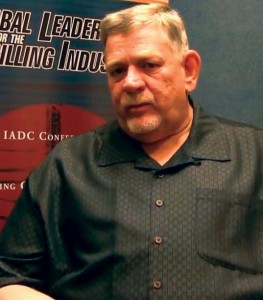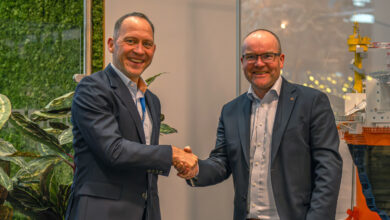Perspectives: Goran Andersson, Chevron: Experiential training is the way forward
By Katherine Scott, editorial coordinator

As a new generation enters the industry work force, Chevron’s Goran Andersson strongly believes it is imperative to establish an industry path toward more interactive training methods. This vision includes developing more robust team-based training that incorporates group decision making and advanced simulation exercises. “You want to touch, feel and be involved in the training; that’s how we learn, especially the younger generation. That’s the direction we’re moving. … I think we will see a tremendous increase in that type of training over the next couple of years,” said Mr Andersson, who served as team lead for Chevron’s Drilling and Completion (D&C) Training Center from 2009 to early 2012.
With a background in civil engineering, Mr Andersson entered the energy industry in 1980 as a drilling supervisor trainee with Shell. That experience was followed by offshore and onshore operations at Statoil and WEST Engineering before he joined Chevron in 1998. He was drawn by the company’s safety values. “Chevron has some very good visions on safety. … I could see (my similar) ambitions existed within (the company).”
As team lead of Chevron’s D&C training center, Mr Andersson helped the training facility to add additional courses to the existing well control training, including risk and uncertainty management, leadership workshops, unscheduled event prevention, and drilling well on paper facilitation for drilling teams.
Looking at the state of the industry, Mr Andersson acknowledges that it is important for the next generation of training to become more experiential; shifting away from typical classroom media. All too often a person’s experience is measured in years instead of quality experiences. By incorporating simulator and team-based training into the curricula, it gives trainees a chance to visualize through quality simulation experiences.
“I think the days of PowerPoint slides are gone. … Through interactive and virtual courseware, we will see an increased sense of ownership of one’s own learning, leading to better results,” he said. Mr Andersson has researched the approach to training adopted by other high-performance industries, such as military and civilian aviation and the nuclear power industries. They foster a continuous proficiency program that is documented and ensures competency and perpetual growth at all levels.
“It never ends. Training is a continuous process that is a part of everyday operations. The training itself is also continuously evolving to keep up with new technologies and associated training challenges.” Conversely, he said the oilfield tends to lean on experience and legacy classroom training delivered very infrequently. There are a wide range of opinions and know-how that are personality-based versus process-based, which leads to a lack of standardization. “Here, the oilfield has much to learn,” says Mr Andersson.
Customizing training to a student is also critical to getting better results. “An engineer does not necessarily need the same training as a wellsite supervisor. It’s a matter of delivering the right training to the right people at the right time.”
In addition to his work with Chevron, Mr Andersson served as co-chairman for the IADC Well Control Committee and chairman of the IADC WellCAP Curriculum Subcommittee from 2009 until early this year. During his time with the committee, he led the group to make significant enhancements to the WellCAP curriculum, starting with the Supervisory Level Course.
In addition, he has been working on an internal program that promises to address knowledge and skill decay in between the current two year IADC certification cycle. “I think one of our biggest steps forward is that we increased the simulator training requirement to a minimum of 30% of the IADC WellCAP curriculum, thereby providing more interactive and experiential learning delivered through modern media that includes distributed simulation and interactive courseware that can be consumed anywhere in the world.”
Although Mr Andersson recently rotated out of his training center leadership position into a new post as drilling operations manager for Poland, he remains ever passionate about the need for world-class training and emphasizes its value in this global industry. “We need to clearly understand that one dollar invested in quality training yields a significant ROI. A single error does not just affect that company; it can affect the world market. The need for training should not be sparked by a single event but rather should be a foundational part of a company’s strategy to continuously develop our workforce,” he said. Further, he hopes to see service companies become more integrated into the operator’s well control prevention efforts. Although most drilling service providers do a great deal of internal training, he believes more can be done to incorporate them into well control during the drilling process. “They are an extremely important part of the team,” he stressed.
If industry continues to place increased focus and investment in training, Mr Andersson believes that it will dramatically reduce the negative effects of the Big Crew Change. “People tend to focus on training costs rather than results. In the long run, I believe it is more cost-effective, efficient and safer to always do it right the first time, at a possibly slightly slower pace.”




